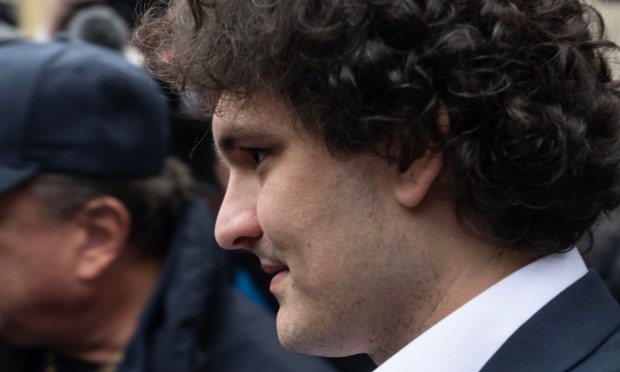
The biggest white collar trial of the past 15 years starts next Tuesday (Oct. 3).
And the defendant, Sam Bankman-Fried — the famously frumpled co-founder of the allegedly fraudulent FTX cryptocurrency exchange — is dressing up for it.
This, as Bankman-Fried’s lawyers have asked the judge overseeing his case to provide their client with three suits, four dress shirts, three ties, a belt, shoes and other clothing such as “appropriate undergarments.”
During his reign atop the crypto industry, Bankman-Fried was well-known for his proclivity to don the hyper-casual uniform of a disruptive tech entrepreneur — T-shirts, cargo shorts and sneakers — even when sharing the stage with buttoned up global leaders like Tony Blair and Bill Clinton.
His sartorial tastes have changed now that he is fighting for his freedom. After all, appearing in court wearing a prison jumpsuit might unduly sway the jury’s point of view.
The U.S. Marshals Service or the Metropolitan Detention Center (MDC), where Bankman-Fried is currently jailed, will have to accept and maintain the business clothing, per the court filing.
Read also: From Crypto Fame to Courtroom Shame: Bankman-Fried’s Rise, Fall, and Reckoning
The Crypto Tycoon Faces the Courtroom
Still, the accused 31-year-old will need to hope that the MDC cell he is being held in has a mirror to dress in front of.
That’s because while Judge Lewis Kaplan, the Manhattan Federal Judge overseeing Bankman-Fried’s upcoming six-week criminal case, has allowed the former crypto wunderkind a pair of suits, Bankman-Fried’s 11th-hour request to be released into the custody of his defense team in order to prepare for his trial was denied for the umpteenth time.
The reason? Bankman-Fried is facing so much time if convicted that he could be deemed a flight risk.
“The closer we get to trial, the more I’m wondering about that,” Judge Kaplan said to the defense team at a hearing on Thursday (Sept. 28). “Your client, if there is conviction, could be looking at a very long sentence. If things begin to look bleak — maybe he feels that now — if that were to happen and if he had the opportunity, maybe the time would come that he would seek to flee.”
But the week wasn’t all bad news for Bankman-Fried, who is facing seven criminal counts of fraud and money laundering related to his alleged role in the misappropriation of an estimated $8.7 billion of his former company’s customer assets.
Judge Kaplan allowed him two small victories: he now has permission to use an air-gapped (securely disconnected) laptop to take notes during trial, though he will not be able to hold onto the device when outside of the courtroom; and the Department of Prisons has been given the green light to allow Bankman-fried to meet with his attorneys as early as 7 a.m. on weekday mornings.
Read more: Chronology of a Crypto Crash: FTX’s Prince to Pauper Meltdown
Standing Alone Against Mountains of Evidence
The reason for Judge Kaplan’s leniency is the fact that federal prosecutors have compiled one of the largest troves of evidence ever collected in a white-collar securities fraud case, and Bankman-Fried’s defense has been harping on their client’s alleged inability to adequately prepare for trial.
“This is a document-heavy case and Mr. Bankman- Fried is entitled to defend himself,” the defense wrote to the court. “The Government pretending that his current circumstances are not interfering with his right to counsel is false.”
“There is … no basis to grant the defendant the extraordinary accommodations unavailable to other inmates that he requests, let alone to grant him temporary release,” the government responded.
Of the thousands upon thousands of documents delivered to Bankman-Fried and his team, the final 1,300 which the government plans to discuss in its prosecution were just recently revealed.
Per a court filing, the mountains of evidence the prosecutors are mobilizing against Bankman-Fried are in support of six claims.
Those claims are that Bankman-Fried:
Bankman-Fried has maintained his innocence.
Members of his trusted inner circle at both FTX and Alameda Research, have not been so stalwart in their resolve.
Key witnesses for the trial, including FTX Co-founder Gary Wang; the exchange’s former head of engineering Nishad Singh; one-time Alameda Research CEO Caroline Ellison; and Ryan Salame, former co-CEO of FTX’s Bahamas subsidiary, have all pleaded guilty to criminal charges for their part in misappropriating FTX’s customer funds and are cooperating with the prosecution.
All except for Salame will provide testimony at Bankman-Fried’s trial.
The claims portal for the millions of customers defrauded by FTX closes on Friday (Sept. 29).